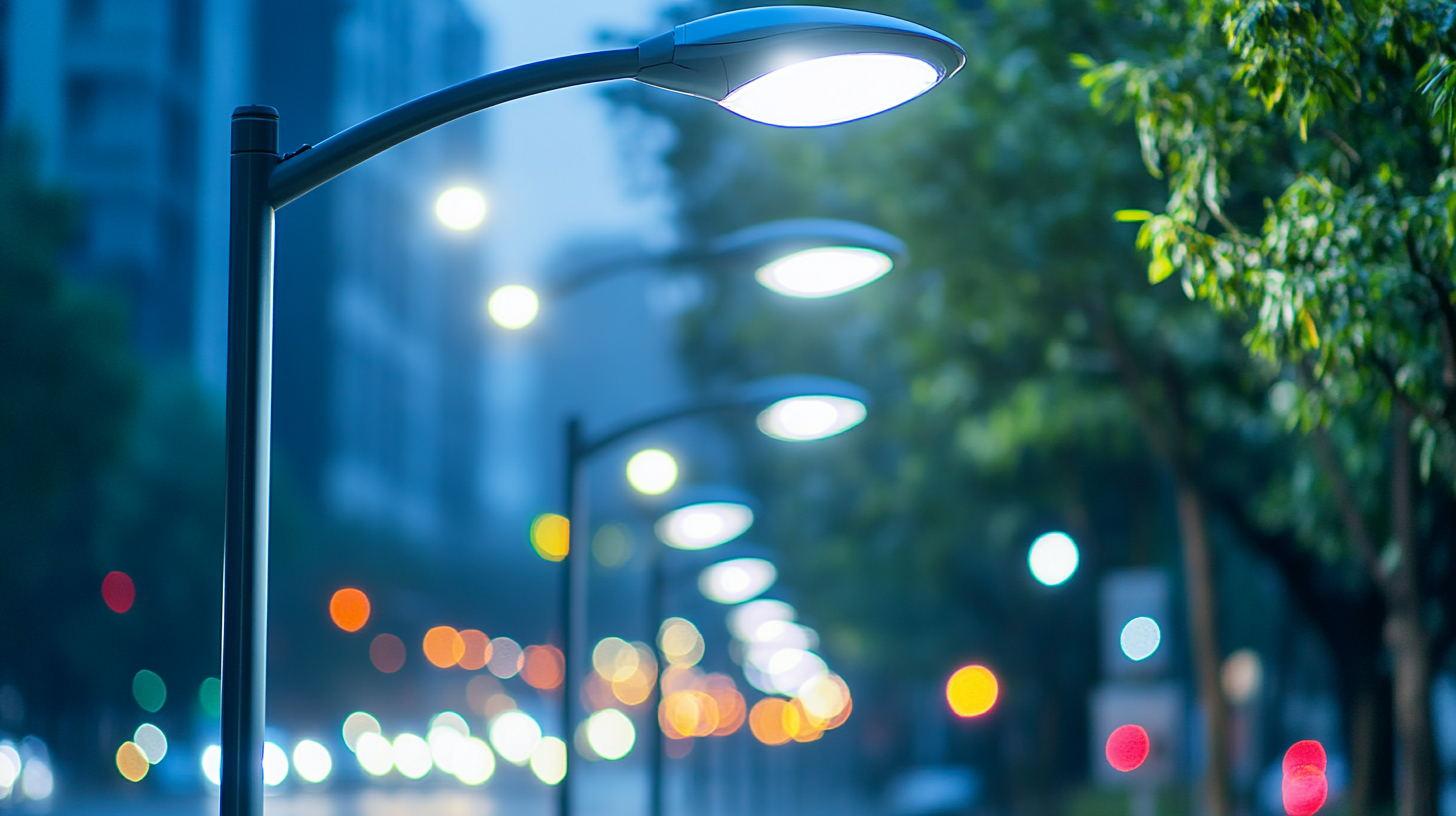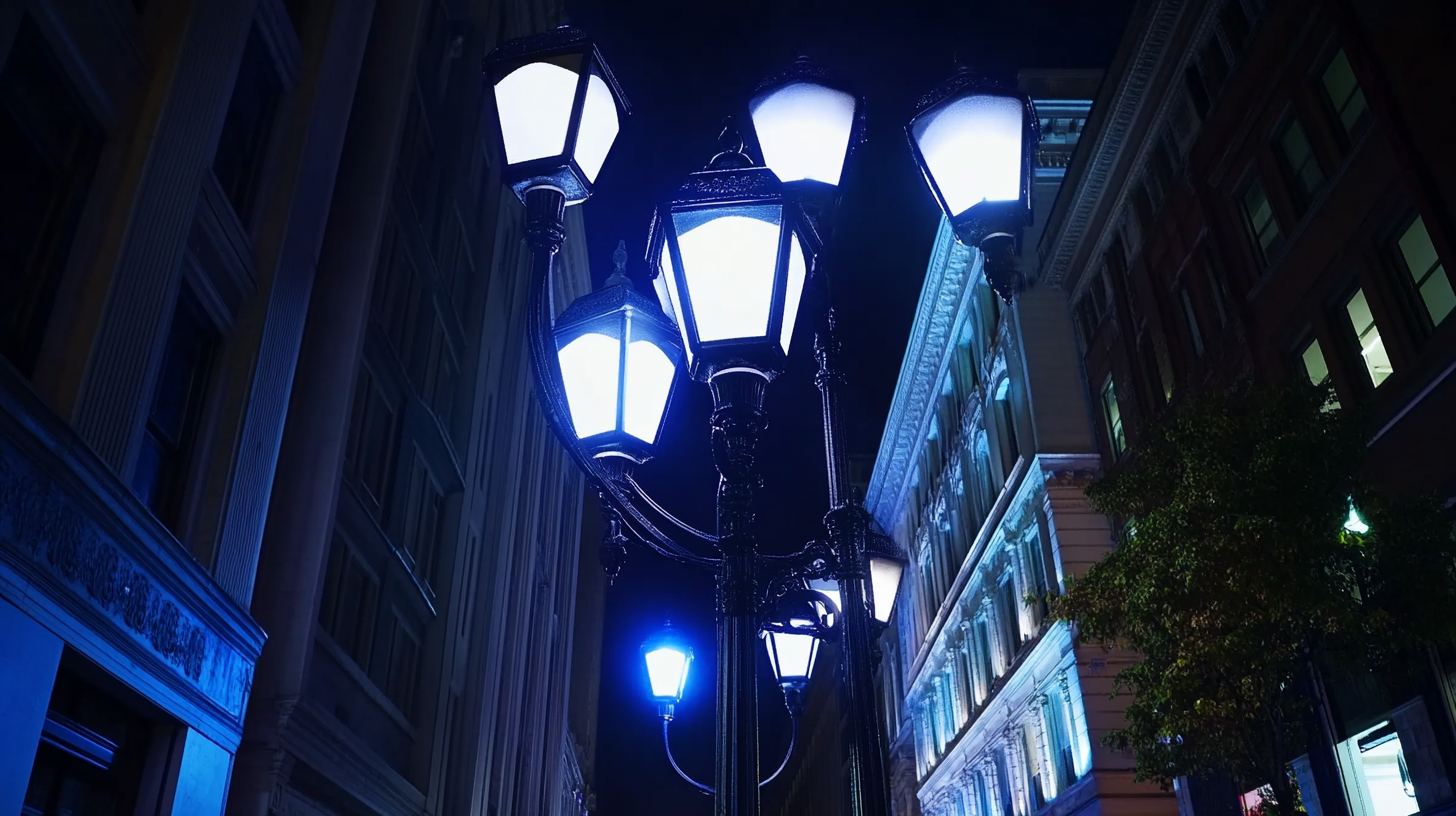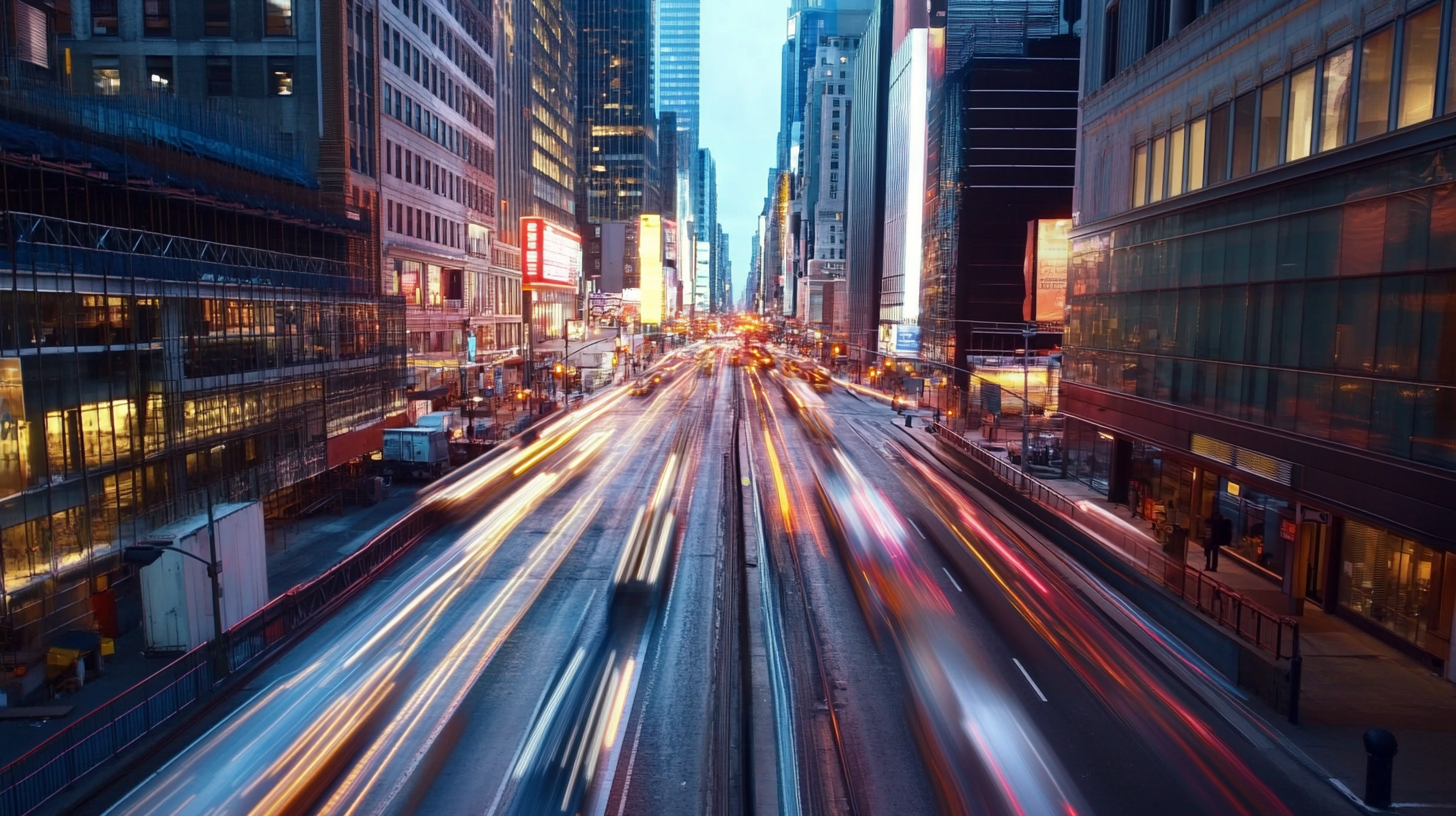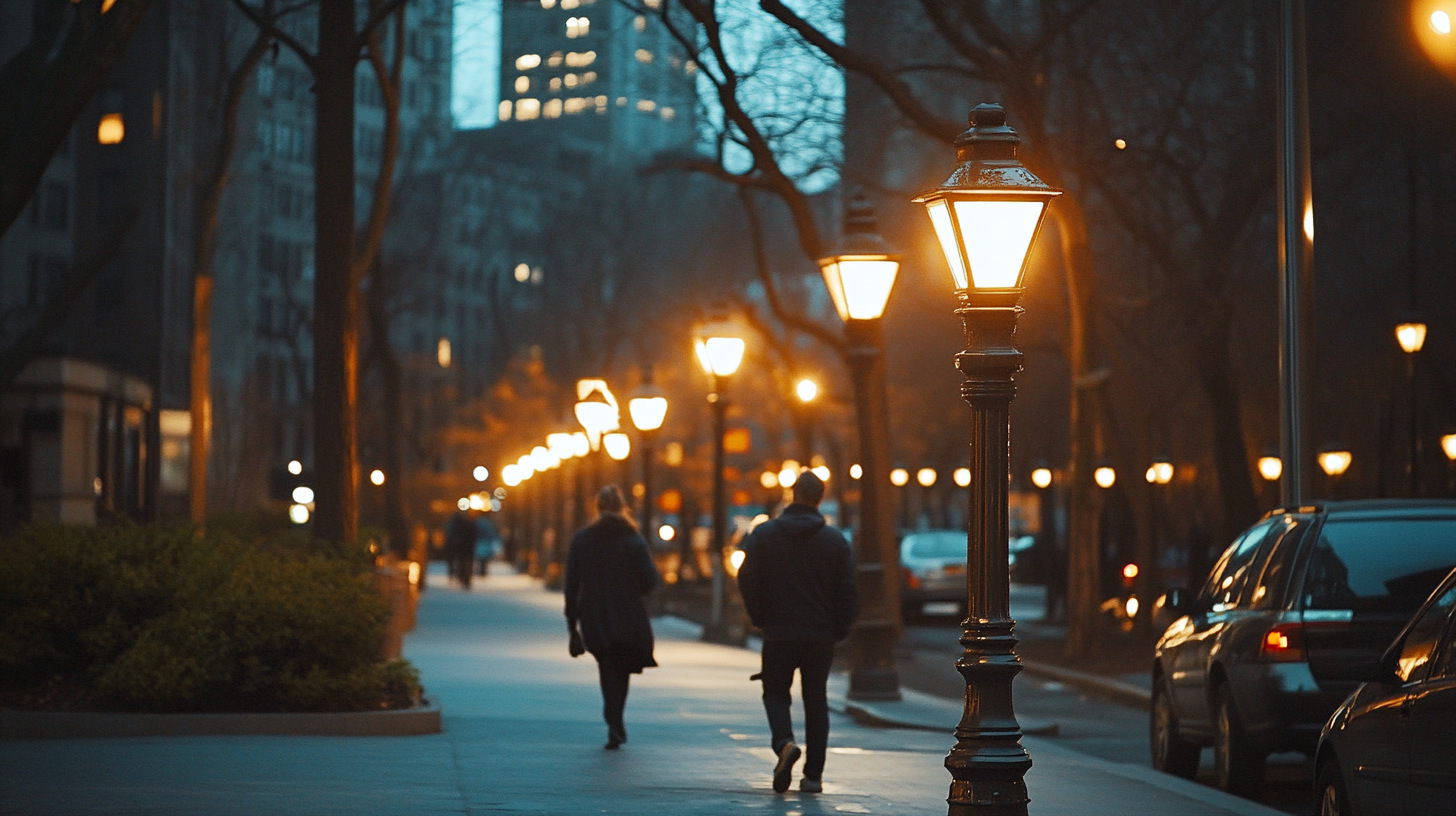Transforming Urban Safety: Case Studies on LED Street Lights and Challenges in Implementation
There are several elements that make an urban society thrive, but in this era, with the rise of crime and an increase in accidents on the road, the most vital element has become safety in the cities across the globe. It has been revealed from the data of the National Highway Traffic Safety Administration that street lights, especially LED street lights, have a fine effect on making roads safer. Such lighting can reduce nighttime accidents by almost 30%. Moreover, a study published by the Institute for Transportation Engineers demonstrated that well-lit street areas deter criminal activity because illuminated settings do not attract potential offenders. Hence, as the cities grow, the lighting of the whole city will fall into LED street lighting that will probably change the ways to build much safer public spaces that are more welcoming.
However, cities go through different hurdles when implementing the LED street lights. Some of the elements are budget constraints, integration of technology, and resistance from the community, which make these aspects hard to realize. According to a report by the International Energy Agency, while 85% of cities recognize the advantages of smart lighting solutions, only 22% have successfully integrated them into their infrastructure. Therefore, overcoming these challenges is important for municipalities that want to use great innovations such as lighting in improving their safety levels. This blog will highlight different case studies undertaken to show successful installation of LED street lights and why they are still facing many hurdles in their emergence: a rich information source for cities preparing for this crucial technological travel.

The Role of LED Street Lights in Enhancing Urban Safety
Almost all urban areas have now adopted LED street lighting, thereby situating the very core of safety and efficacy in their path. Philadelphia, with the installation of 130,000 newly erected LED streetlights, is leading this venture to cut energy consumption and improve the safety of its residents. Preliminary reports indicate that these bright energy-efficient lights may bring crime and traffic accidents to a significant low, creating an environment that is safer for pedestrians and drivers alike. Yet there are challenges faced during the adoption of these LED lights. In some areas, there arose a genuine concern over light pollution and the specter of over-illumination. For instance, recently in Sylvania, projects have come under fire to articulate and weigh the needs for illumination against the need to preserve night-time ambiance. Another critical issue arises from the failure of many installations in some cities, with some reports stating over 7,000 LED bulbs not functioning in some areas, which raises serious safety considerations, pointing to a need that effective maintenance systems accompany installations to make them work. As cities across the land begin to embrace modern technologies, the evolution of illumination of the streets forms a basis for both challenges and opportunities. The other outcome of good illumination with LED streetlights is that it adds to safety in urban areas and nurtures a sense of community well-being. These dynamics will present a rather confusing context in which municipalities will need to negotiate for the sake of creating a safe ambience suited for public engagement that redefines urban living.

Innovative Case Studies Illustrating Successful LED Implementations
Transformative as it may sound, LED street lighting has proved a far-reaching and cheap kind of solutions in urban safety. Another practical case in point is their impact as an effect from an analysis done in Los Angeles. The city changed over 140,000 traditional street lighting into LED fixtures, with the resultant effect of over 63 percent reduction in energy consumption. According to a report by the U.S. Department of Energy, transitional cities to LED light could save approximately up to $17 billion on energy bills by the year 2030, which is extremely promising for the financial future of municipalities.
This could be yet another such case in the innovative Amsterdam, which set up a smart LED street light system that automatically adjusts its brightness according to the presence of pedestrians and vehicles. The system would keep the lights glowing during those busy peak hours, thus keeping energy waste low and further improving safety. Research from the Institute of Transportation Engineers suggests that environments that have sufficient lighting can reduce crime rates by up to 50 percent, therefore meeting that threshold of the necessity of LED lighting to transform the urban areas in terms of safety.
Implementation does have its problems when it comes to LED lighting. Local authorities, for example, can budget shortfalls, no fit technologies, and public resistance among other things, as hurdles to take them on. There is a, therefore, warning by the report of International Energy Agency that unless these barriers are tackled, the LED technology potential will remain untapped. It can be trying community conversations including pilot programs to address some of these problems collaboratively and transform urban environments.

Challenges Faced During the Transition to LED Lighting
Urban planners and municipalities will have to face a number of challenges with the transition to LED street lighting. The battle against the initial upfront costs is one of the more deterrent factors that would require investment to replace the older infrastructure. Although LED-lights promise to save money in the long run because of energy efficiency and low maintenance, it is usually the capital expenditures associated with procurement and installation that prove a barrier in a tight budget scenario with other pressing urban needs. Many cities will need to find grant mechanisms or partnerships to dull the magnitude of this financial burden, thus further complicating the implementation process.
The technical changes involved in the process also raise several questions of compatibility and integration with existing systems. In some cases, the older infrastructures in historic urban formations may lack the capacity to accommodate technologically advanced LED lighting, thereby imposing even further upgrades that will unnecessarily escalate costs and extend timelines. Ensuring that the systems gel together well in consonance with other smart city efforts counting traffic management and security systems creates even more complexities for the transformation.
Another dimension that cannot be minimized is public engagement. When cities go into the LED transition, residents might oppose the changes based on concerns about light intensity, color temperature, or aesthetics associated with new fixtures. Educating the stakeholders adequately about the benefits of LED technology-such as safety improvement and reduced light pollution-can diffuse some of these apprehensions, but this requires an outreach and education effort. Striking a balance between a technology advance and the feel of the community is key to the successful transition, as it brings out the multifaceted challenges facing the changing landscape.

Community Engagement and Public Perception on LED Safety Benefits
In many ways, transitioning to LED street lights involves more than upgrading equipment; it is one way to have communities perceive their urban safety in a completely new light. Safety is expected to improve because brighter and energy-efficient lights enhance visibility, not just reducing crime but improving public safety. But simply installing LED lighting systems is not enough; it also involves effective community engagement and public perception management.
Involvement of the community in the decision-making process is also vital in the building of perception regarding the advantages brought on by LED street lights. Organizing workshops, town hall meetings, and surveys to solicit views and concerns from the communities may go a long way. There could also be worries such as light pollution, aesthetics, or the cost implicated by many community members. These would be serious issues that need to be considered by city planners. This may not only inform the public about the long-term energy savings and safety improvements that will come with the lights, but it will also, through openness, create trust and ownership into the process.
Public perception is also very important for the overall success of LED street lighting projects. People who associate well-lit streets with safety would, generally, be on the side of adopting such an innovation or improvement. Campaigns that would feature successful case studies from other municipalities would help illustrate how crime has directly been reduced and the quality of life enhanced. Cities can also bring in a more educated public to lend their support toward this initiative by disseminating positive portrayals associated with LED street lighting through social media, local events, and community networks: making urban areas safer.
Future Trends in Urban Lighting and Safety Solutions
There is a pressing need to come up with inventive ways to ensure safety through efficient lighting as populations grow within urban confines. Cases show that more than 70% of urban crime in the United States happens in substandardly lit areas, indicating a valid linkage between lighting and public safety. Transitioning to LED street lights has come forth to change the game by providing clear visibility and decreasing energy consumption, sounding a bell in the name of financial responsibility up to 50% of traditional lighting consumption. The transition has not allowed cities to reallocate and spend their resources in a fundamentally more efficient way. Hence, enhancing the safety and convenience of urban areas becomes easier.
As an afterbasis, future trends in urban lighting solutions should think beyond mere illumination. Smart lighting systems enabled with sensors, operating within real-time analytics worlds, have a place in the age of urban safety-and these are other big things happening. A recent study by the International Dark-Sky Association utilizes such adaptive lighting, which may cause a fall in crime rates by around 30%, where the system uses foot traffic and local condition feedback to vary the brightness of the luminaires. Furthermore, their wise use possibly includes light that can dim during late evening hours while advancing pedestrian safety for a more instantantly welcoming urbanity.
Besides that, the augmentation of IoT is yet another driving force that is remodeling urban lighting. Artificial intelligence-enabled camera technology is being developed in today's smart city plan so that its vast interrelationship with smart streetlights and emergency response systems will reduce the reaction time when these incidents arise. According to the Urban Institute, it suggests these might reduce response times by as much as 25%. By ushering in these new technologies, urban planners and city officalls can therefore provide a vision of the future city that is not only filled with light, but fundamentally secured for its inhabitant.
